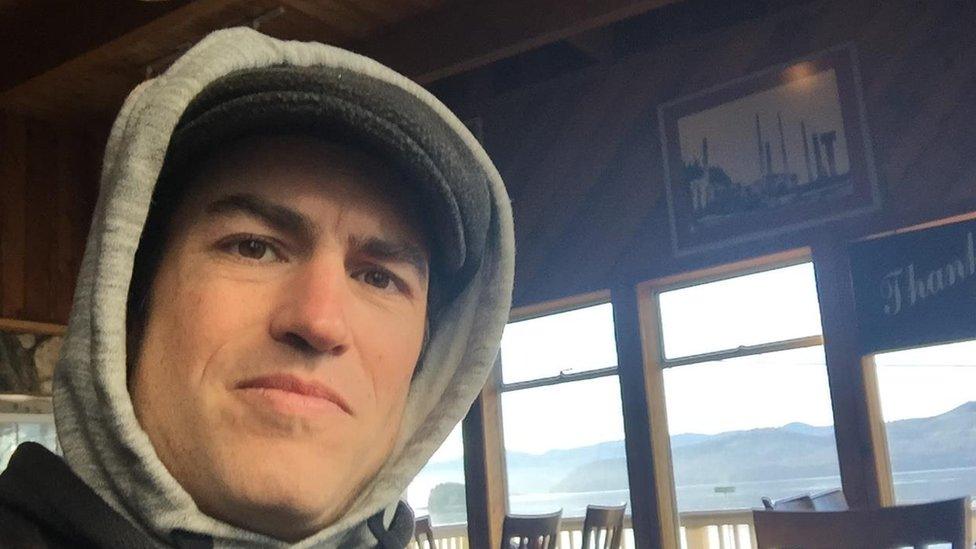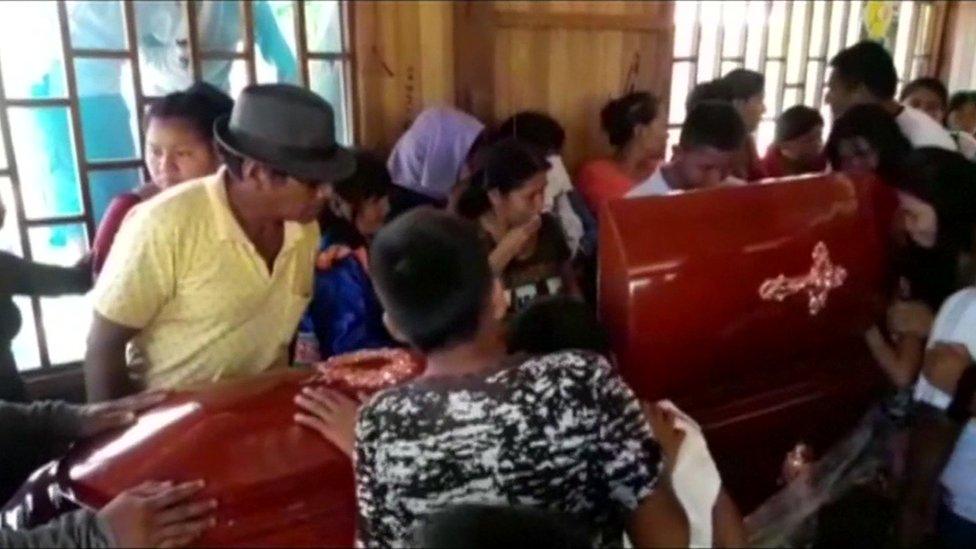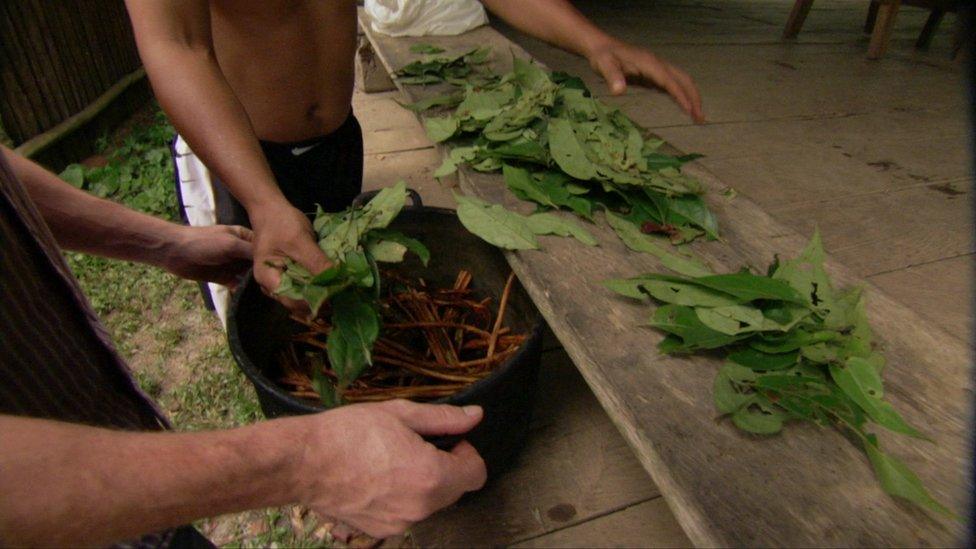Canadian lynched in Peru as locals accuse him of murder
- Published

Sebastian Woodroffe went to Peru to learn from indigenous plant healers, a friend said
Officials in Peru are investigating the lynching of a Canadian man in the remote Amazon region of Peru.
Police found the body of Sebastian Woodroffe, 41, on Saturday buried near where an indigenous spiritual healer had been killed days previously.
Investigators say locals suspected Mr Woodroffe of the murder of 81-year-old Olivia Arévalo, who was shot dead on Thursday.
Officials said they would not rest until both murders had been solved.
Who was Sebastian Woodroffe?
Mr Woodroffe was a Canadian citizen from the town of Courtenay on the east coast of Vancouver Island in British Columbia.
Canadian broadcaster CBC quoted a friend of Mr Woodroffe as saying that the 41-year-old had travelled to Peru on a number of occasions to experiment with ayahuasca, a hallucinogenic drug.
According to Canadian news portal Canoe.com, Mr Woodroffe went to the Ucayali region in Peru's rainforest hoping to do an apprenticeship with a plant healer from the Shipibo indigenous group.
"I feel responsible trying to support this culture and retain some of their treasure in me and my family, and share it with those that wish to learn," Mr Woodroffe wrote on a fundraising site, external.
His goal was to change careers to become an addiction counsellor using hallucinogenic medicine.
A family member's struggle with alcoholism inspired Mr Woodroffe's decision to help "fix the family spirit", he said in a 2013 YouTube video, external.
What happened to him?
Police launched a search for the Canadian after a video emerged on social media showing a man identified by Peruvian prosecutors as Mr Woodroffe lying in a puddle groaning while another man puts a rope around his neck and drags him along.
A group of locals stands by and watches while the man with the rope around his neck appears to go limp.
Mr Woodroffe's body was found in a shallow unmarked grave on Saturday.
Peruvian officials say forensic tests carried out on his body show that he died by strangulation and that he had received several blows across his body.
Why was he killed?
Local prosecutor Ricardo Palma Jimenez says officials are still investigating several theories as to why Mr Woodroffe was killed but local media say some villagers blamed him for the killing of Olivia Arévalo.
Mr Woodroffe had not been named as a suspect in Ms Arévalo's murder but villagers suspected him because he was allegedly one of the spiritual healer's clients.
"A foreigner can come and kill us, day after day, like dogs or cats, and nothing happens, the state does nothing," one local woman told a Peruvian official on television, according to the Washington Post, external.
"We want the communities of the Amazon to know that there is justice," Jimenez told TV Peru, external in Ucayali. "But not justice by their own hands."
Who was Olivia Arévalo?


Olivia Arévalo was a spiritual healer as well as a rights activist

Ms Arévalo was a member of the indigenous Shipibo-Conibo group, who was known as a spiritual healer and shaman in her local community.
She was also a vocal advocate for the group's culture and rights.
She was shot dead outside her home on Thursday. Her killing sparked outrage among the local community who have seen a number of indigenous leaders killed over recent years.

Some members of Ms Arévalo's community blamed Mr Woodroffe for her killing
As a spiritual healer, Ms Arévalo would have had extensive knowledge about ayahuasca, the hallucinogenic drug Mr Woodroffe went to the Amazon to study.
The Shipibo have been using ayahuasca for centuries as part of their "healing ceremonies".
What's ayahuasca?
Ayahuasca is considered one of the strongest psychedelic drugs in the world.

Read more about ayahuasca:

Also known as yage, it is a blend of two plants - the ayahuasca vine (Banisteriopsis caapi) and a shrub called chacruna (Psychotria viridis), which contains the hallucinogenic drug dimethyltryptamine (DMT).
DMT - and therefore ayahuasca - is illegal in the UK, the US and many other countries although some exceptions are made for members of particular churches which use the tea as part of their religious ceremonies.
It has been used by shamans, or healers, in the Amazon for centuries for medical and spiritual purposes.
It has become increasingly popular with backpackers who take part in ayahuasca ceremonies in the rainforest.
A number of deaths has been attributed to the drug, including that of British gap-year student Henry Miller in Colombia in 2014 and that of New Zealander Matthew Dawson-Clarke last year.
In at least one case, a Briton was stabbed to death during an ayahuasca ceremony when he allegedly attacked a Canadian who was also taking part in the ceremony.
Read: Briton Unais Gomes killed in Peru 'during shamanic ceremony'
Are lynchings common in the area?
Remote areas of the Amazon have a very thin police presence and crimes often go unpunished.
Communities sometimes bypass the police altogether, choosing to punish those they suspect of committing crimes themselves.
Local media report that villagers were outraged by the murder of Ms Arévalo, who was an influential figure.
It is not clear, however, why their anger focussed on the Canadian as other indigenous leaders have in the past been targeted by landowners.
- Published29 September 2017

- Published18 December 2015
